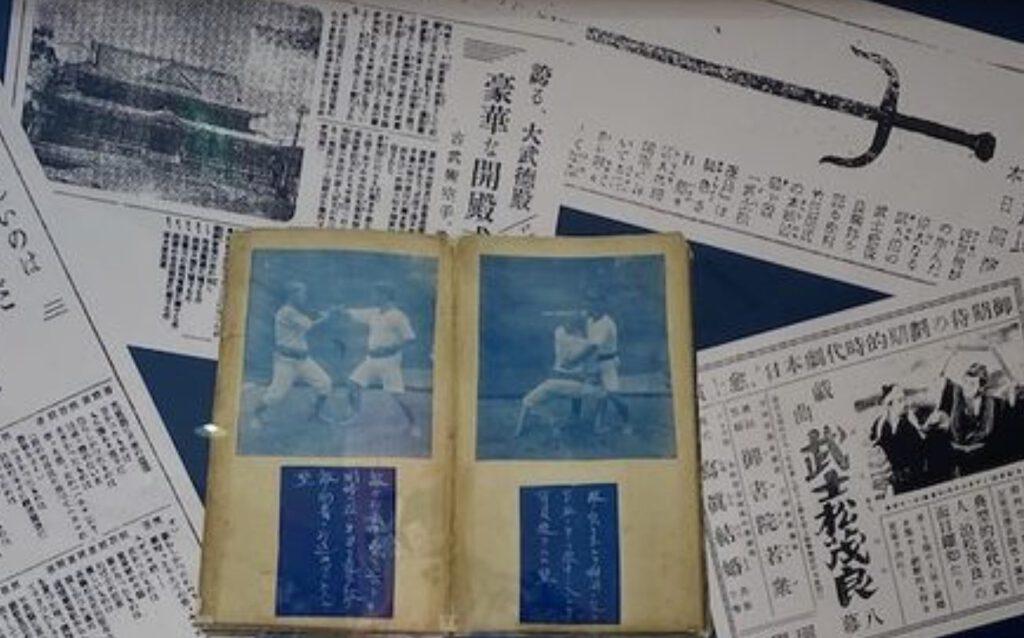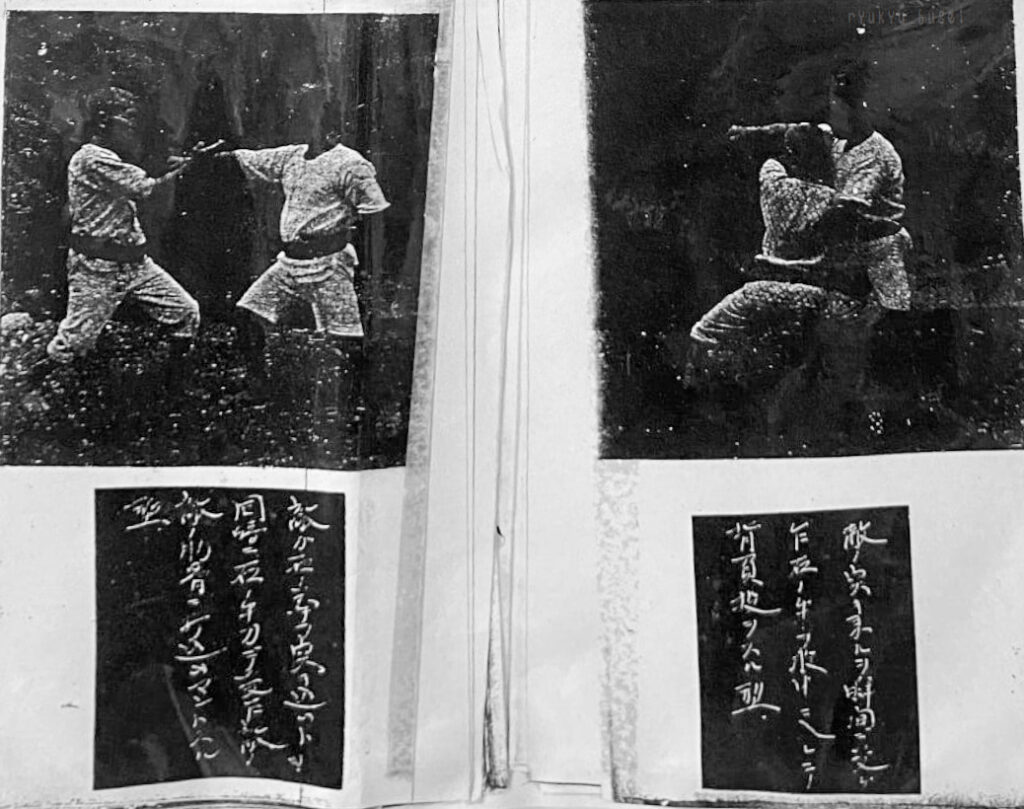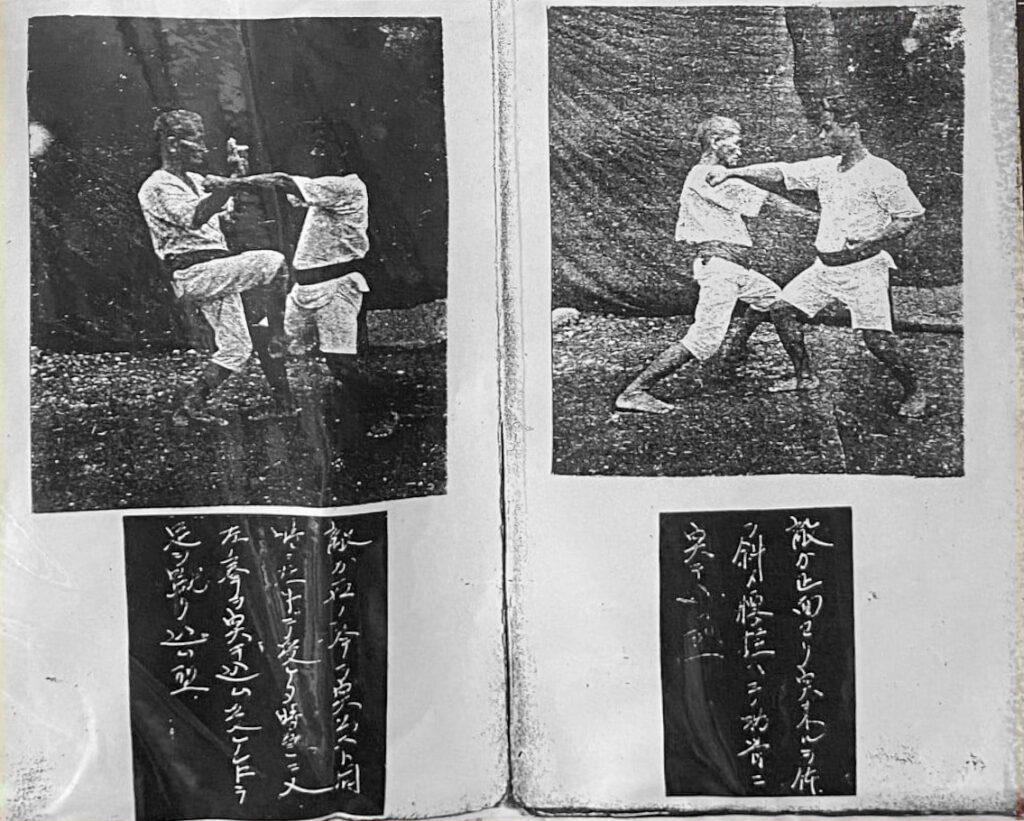A panel exhibition sponsored by Okinawa Prefecture that introduces the history of Okinawa karate during the early Shōwa period (started 1926) began on April 8 in the lobby of the Okinawa Karate Kaikan Exhibition Room in Tomigusuku City. The kumite publication “Illustrated Basic Okinawa Kenpō Karate-dō” (Okinawa Kenpō Karate-dō Kihon Zukai) is publicly exhibited for the first time. The book details the fighting techniques (kumite) of the late Kyan Chōtoku, who was a master of Okinawa karate and who was called the “Saint of Boxing” (kensei). “This prewar manuscript of Kyan is a very valuable material,” says the person in charge from Okinawa Prefecture.
The exhibition runs until March 31, 2022. The entrance is free.
It is a folding book made from a long strip of paper that is folded back and forth in a zigzag. It consists of 26 pages including the front page with a length of 15.5 cm and a width of 9 cm. It comprises an introduction of karate on the first 10 pages, and pictures with explanations of kumite postures and stances in the latter 15 pages. Kyan Chōtoku is photographed doing kumite, explaining an outline and the postures of the techniques. Okinawa Prefecture copied the original of the book from the persons in possession of the original. A part of it is exhibited on a panel.
At the end of the book is written “Shōwa 7,” i.e., 1932. It was published as a book by a disciple of Kyan at that time. So far it has not been made public who this disciple was. It is also said that there was also a “kata edition” that was a sister book of the kumite edition. This would probably clarify many things, most importantly about kata such as Ananku, Seisan, and others. Unfortunately, the “kata edition” has not been found so far.
Moreover, for the first time, a ryūka (Okinawan poetry in classical Ryūkyūan language) has been found which was created by Kyan Chōtoku. Kyan dedicated it to the Okinawa Shrine. In the poem Kyan cites a famous ryūka once written by the poet Unna Nabī. Unna Nabī who was not an upperclass person but a female farmer of the 18th century. Her monument is erected in Onna village. The poem reads, “When you pray at the shrine and at ceremonies, even the wind stops, for the five late kings, I must say my prayer and be thankful for my fortune.” (Jinja umachiriya, kajinu kwin tumari, guhashiranu ukami, miunchi ugama).
In addition, twelve articles, including newspaper articles are also on display. They are from the time when the late Fujita Tsuguharu (1886-1968), one of Japan’s world-class painters, talked about his impression of Okinawa karate when he visited Okinawa in 1938.
The panel exhibition will be held at the Okinawa Karate Kaikan Reference Room. The Karate Kaikan collected 2385 items such as newspaper articles and materials related to Okinawa Karate so far. A part of 325 materials including newspapers from 1938 to 1940, such as newspaper articles on prewar karate, are put together on 12 panels and displayed in the lobby of the exhibition facility in the library. Sonohara Ken, chief of the Okinawa Prefectural Karate Promotion Division, said, “I want many citizens of the prefecture to come into contact with the history of Okinawa karate and use it for academic promotion.”
For inquiries, call 098 (866) 2232 at the Okinawa Prefectural Karate Promotion Division.
Sources:
- The Kumite of the “Saint of Boxing” – First Public Exhibition – Panel Exhibition Begins at the Karate Taikan (“Kensei” no kumite – Hatsu kōkai – Karate Kaikan de paneru-ten hajimaru). Okinawa Times, April 9, 2021.
- Newspaper Articles and Other Collected Materials on Prewar Okinawa Karate Released to the Public at Panel Exhibition at Karate Kaikan (Senzen no Okinawa Karate, Shinbun Kiji nado Shūshū Shiryō o Kōkai Karate Kaikan de Paneru-ten). Ryūkyū Shinpō Digital, April 9, 2021.
- Photos from panels exhibited at the Karate Kaikan. Courtesy of Patrick McCarthy Sensei.
- Photos of the book exhibited at the First Okinawa Karate Museum of Hokam Tetsuhiro Sensei. Courtesy of Patrick McCarthy Sensei.
© 2021, Andreas Quast. All rights reserved.




